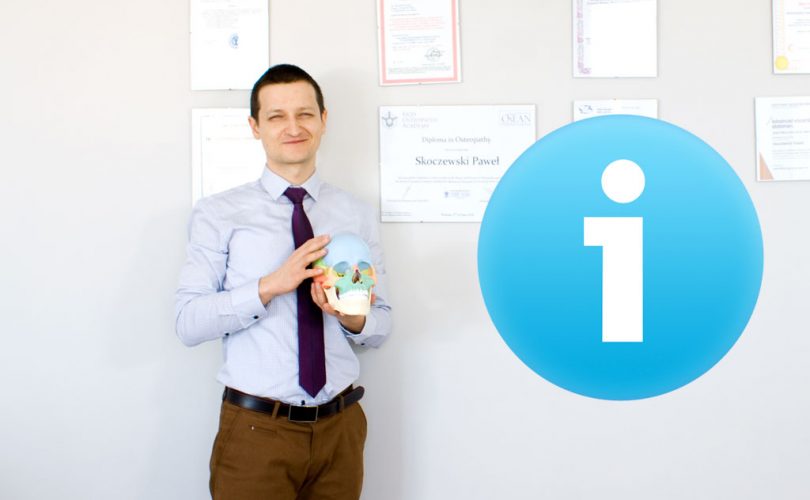The test begins as soon as the patient enters the office, the therapist
observes his way of moving, breathing, assesses the patient’s attitude
and general condition. The next stage is an interview, that is a
subjective examination, often overlooked, and can provide the therapist
with many valuable tips. Sometimes, after the interview itself, you can
make an accurate diagnosis, so it is worth spending a moment and
listening to the patient and asking him the right questions that will
get the information you need. It is important that the patient is before
eating a hearty meal or at least two hours after – examination, therapy
often takes place in the position of lying on the stomach or the
assessment of the abdominal wall are subject to evaluation.
The patient is then examined, which is stripped (in the underwear
itself) – the patient’s low awareness of this issue and the often-found
embarrassment should be taken into account. Nevertheless, for a reliable
assessment, it is required to explain to the patient that such an outfit
is necessary to assess body posture, body symmetry, muscle tone, skin
condition, blood vessels, visible scars after surgery.
After the examination, the therapist performs a palpation palpation to
assess the state of muscle tension, the condition of the fascia and the
skin. The next steps are the study of active and passive movements,
resistance tests and special tests, eg neurological tests. Imaging
(X-ray, MRI, CT) may be helpful.
In case of unclear diagnosis, the therapist refers the patient to a
specialist. NOT ANY DISEASE CAN BE TREATED WITH OSTEOPATHY / MANUAL
THERAPY OR MASSAGE !!!
At the end of the study description, I have a very important request
addressed to PATIENTS: a person having a cold (sore throat, cough, runny
nose, fever, intestinal flu) should cancel the appointment as soon as
possible. The body is focused on the fight against infection and then
the therapy makes no sense, it can only worsen the health of the
PATIENT. I will not mention the fact that after such a visit the
therapist himself must go on forced leave because of illness …
